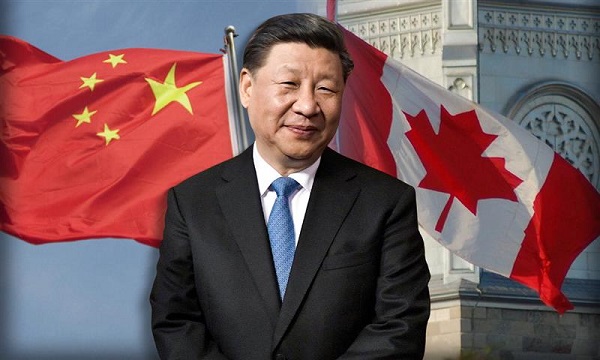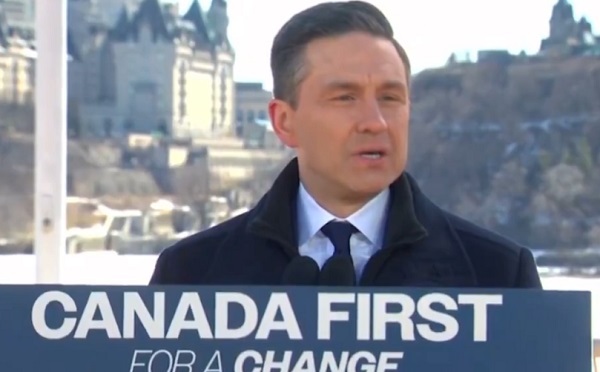Opinion
Councillor Harris asked and the city said yes, now the city is taking the lead on Energy Retrofits.

Councillor Paul Harris forwarded a motion asking the city to consider advocating for an energy retrofit program. The city adopted the motion, and is now a leader among Alberta’s cities in this arena.
It was not unanimous among the councillors, and it was not expected to achieve unanimity, actually it was uncertain if it would garner a majority vote.
This motion may not accomplish what it hopes, but it did turn a page. This motion addressed issues like the environment, economics, unemployment, diversity and the future. It expanded our thinking outward after years of looking inward, concentrating on inner issues like downtown revitalization. I am pleased because I have yet to find any successes, where the mayor claims it is due to downtown revitalization.
Paul Harris has been bruised while on city council, he has carried the baggage of issues like the bike lanes and could have kept his head down. He did not, he persevered and took unpopular stances, many of which I argued against, but he kept going and with this latest motion, he can hold his head high.
There are those who believe that this is wrong, it is outside the status quo, it will take away from other issues, it will take attention away from areas like our downtown, and it is different. I would like to see the city concentrate on building a recreation centre and a high school north of the river and develop Hazlett Lake as a tourist destination and staycation paradise, but I also know that we are a region with the poorest air in a province that has the poorest air quality in Canada. I also know that we have an extremely high unemployment rate, and this motion addresses both.
Red Deer’s population is declining, Municipal census says 1,000 fewer residents last year but the Federal census says it was only 400 residents last year, but either one shows a declining population from 2015 to 2016. This may attract new businesses, new jobs, and new residents, I believe so.
The city has been mired in mediocrity and status quo inner circles for too long. All the indicators have shown this, increasing crime rates, population decline, businesses leaving, poor air, high unemployment and lack of serious effort around the neglect of the area north of the river, which by the way had population decline rate nearly ten times per capita higher than the south side of the river.
Perhaps the adoption of this motion may mean the consideration of other issues that have been too long ignored. Instead of diluting our provincial advocacy efforts it might get us noticed, again? I think so.
Rumor has it that Paul Harris may not run in this year’s municipal election. I hope that is but a rumor, because I think Red Deer needs people who have vision and willing to propose different ideas. Besides I would miss criticizing some of his other proposals.
I thank the city for taking the lead on this, It took courage. Thank you.
Automotive
Electric cars just another poor climate policy

From the Fraser Institute
The electric car is widely seen as a symbol of a simple, clean solution to climate change. In reality, it’s inefficient, reliant on massive subsidies, and leaves behind a trail of pollution and death that is seldom acknowledged.
We are constantly reminded by climate activists and politicians that electric cars are cleaner, cheaper, and better. Canada and many other countries have promised to prohibit the sale of new gas and diesel cars within a decade. But if electric cars are really so good, why would we need to ban the alternatives?
And why has Canada needed to subsidize each electric car with a minimum $5,000 from the federal government and more from provincial governments to get them bought? Many people are not sold on the idea of an electric car because they worry about having to plan out where and when to recharge. They don’t want to wait for an uncomfortable amount of time while recharging; they don’t want to pay significantly more for the electric car and then see its used-car value decline much faster. For people not privileged to own their own house, recharging is a real challenge. Surveys show that only 15 per cent of Canadians and 11 per cent of Americans want to buy an electric car.
The main environmental selling point of an electric car is that it doesn’t pollute. It is true that its engine doesn’t produce any CO₂ while driving, but it still emits carbon in other ways. Manufacturing the car generates emissions—especially producing the battery which requires a large amount of energy, mostly achieved with coal in China. So even when an electric car is being recharged with clean power in BC, over its lifetime it will emit about one-third of an equivalent gasoline car. When recharged in Alberta, it will emit almost three-quarters.
In some parts of the world, like India, so much of the power comes from coal that electric cars end up emitting more CO₂ than gasoline cars. Across the world, on average, the International Energy Agency estimates that an electric car using the global average mix of power sources over its lifetime will emit nearly half as much CO₂ as a gasoline-driven car, saving about 22 tonnes of CO₂.
But using an electric car to cut emissions is incredibly ineffective. On America’s longest-established carbon trading system, you could buy 22 tonnes of carbon emission cuts for about $660 (US$460). Yet, Ottawa is subsidizing every electric car to the tune of $5,000 or nearly ten times as much, which increases even more if provincial subsidies are included. And since about half of those electrical vehicles would have been bought anyway, it is likely that Canada has spent nearly twenty-times too much cutting CO₂ with electric cars than it could have. To put it differently, Canada could have cut twenty-times more CO₂ for the same amount of money.
Moreover, all these estimates assume that electric cars are driven as far as gasoline cars. They are not. In the US, nine-in-ten households with an electric car actually have one, two or more non-electric cars, with most including an SUV, truck or minivan. Moreover, the electric car is usually driven less than half as much as the other vehicles, which means the CO₂ emission reduction is much smaller. Subsidized electric cars are typically a ‘second’ car for rich people to show off their environmental credentials.
Electric cars are also 320–440 kilograms heavier than equivalent gasoline cars because of their enormous batteries. This means they will wear down roads faster, and cost societies more. They will also cause more air pollution by shredding more particulates from tire and road wear along with their brakes. Now, gasoline cars also pollute through combustion, but electric cars in total pollute more, both from tire and road wear and from forcing more power stations online, often the most polluting ones. The latest meta-study shows that overall electric cars are worse on particulate air pollution. Another study found that in two-thirds of US states, electric cars cause more of the most dangerous particulate air pollution than gasoline-powered cars.
These heavy electric cars are also more dangerous when involved in accidents, because heavy cars more often kill the other party. A study in Nature shows that in total, heavier electric cars will cause so many more deaths that the toll could outweigh the total climate benefits from reduced CO₂ emissions.
Many pundits suggest electric car sales will dominate gasoline cars within a few decades, but the reality is starkly different. A 2023-estimate from the Biden Administration shows that even in 2050, more than two-thirds of all cars globally will still be powered by gas or diesel.
Source: US Energy Information Administration, reference scenario, October 2023
Fossil fuel cars, vast majority is gasoline, also some diesel, all light duty vehicles, the remaining % is mostly LPG.
Electric vehicles will only take over when innovation has made them better and cheaper for real. For now, electric cars run not mostly on electricity but on bad policy and subsidies, costing hundreds of billions of dollars, blocking consumers from choosing the cars they want, and achieving virtually nothing for climate change.
2025 Federal Election
Liberal MP Paul Chiang Resigns Without Naming the Real Threat—The CCP


 Dan Knight
Dan Knight
After parroting a Chinese bounty on a Canadian citizen, Chiang exits the race without once mentioning the regime behind it—opting instead to blame “distractions” and Donald Trump.
So Paul Chiang is gone. Stepped aside. Out of the race. And if you’re expecting a moment of reflection, an ounce of honesty, or even the basic decency to acknowledge what this was really about—forget it.
In his carefully scripted resignation statement, Chiang didn’t even mention the Chinese Communist Party. Not once. He echoed a foreign bounty placed on a Canadian citizen—Joe Tay—and he couldn’t even bring himself to name the regime responsible.
Instead, he talked about… Donald Trump. That’s right. He dragged Trump into a resignation about repeating CCP bounty threats. The guy who effectively told Canadians, “If you deliver a Conservative to the Chinese consulate, you can collect a reward,” now wants us to believe the real threat is Trump?
I haven’t seen Donald Trump put bounties on Canadian citizens. But Beijing has. And Chiang parroted it like a good little foot soldier—and then blamed someone who lives 2,000 miles away.
But here’s the part you can’t miss: Mark Carney let him stay.
Let’s not forget, Carney called Chiang’s comments “deeply offensive” and a “lapse in judgment”—and then said he was staying on as the candidate. It wasn’t until the outrage hit boiling point, the headlines stacked up, and groups like Hong Kong Watch got the RCMP involved, that Chiang bailed. Not because Carney made a decision—because the optics got too toxic.
And where is Carney now? Still refusing to disclose his financial assets. Still dodging questions about that $250 million loan from the Bank of China to the firm he chaired. Still giving sanctimonious speeches about “protecting democracy” while his own caucus parrots authoritarian propaganda.
If you think Chiang’s resignation fixes the problem, you’re missing the real issue. Because Chiang was just the symptom.
Carney is the disease.
He covered for it. He excused it. He enabled it. And now he wants to pose as the man who will stand up to foreign interference?
He can’t even stand up to it in his own party.
So no, we’re not letting this go. Chiang may be gone—but the stench is still in the room. And it’s wearing a tailored suit, smiling for the cameras, and calling itself “leader of the Liberal Party.”
-

 2025 Federal Election1 day ago
2025 Federal Election1 day agoPoilievre To Create ‘Canada First’ National Energy Corridor
-

 2025 Federal Election1 day ago
2025 Federal Election1 day agoJoe Tay Says He Contacted RCMP for Protection, Demands Carney Fire MP Over “Bounty” Remark
-

 Censorship Industrial Complex2 days ago
Censorship Industrial Complex2 days agoWelcome to Britain, Where Critical WhatsApp Messages Are a Police Matter
-

 2025 Federal Election1 day ago
2025 Federal Election1 day agoHong Kong-Canadian Groups Demand PM Carney Drop Liberal Candidate Over “Bounty” Remark Supporting CCP Repression
-

 2025 Federal Election2 days ago
2025 Federal Election2 days agoChinese Election Interference – NDP reaction to bounty on Conservative candidate
-

 Daily Caller15 hours ago
Daily Caller15 hours agoBiden Administration Was Secretly More Involved In Ukraine Than It Let On, Investigation Reveals
-

 2025 Federal Election1 day ago
2025 Federal Election1 day agoFixing Canada’s immigration system should be next government’s top priority
-

 2025 Federal Election1 day ago
2025 Federal Election1 day agoLondon-Based Human Rights Group Urges RCMP to Investigate Liberal MP for Possible Counselling of Kidnapping











